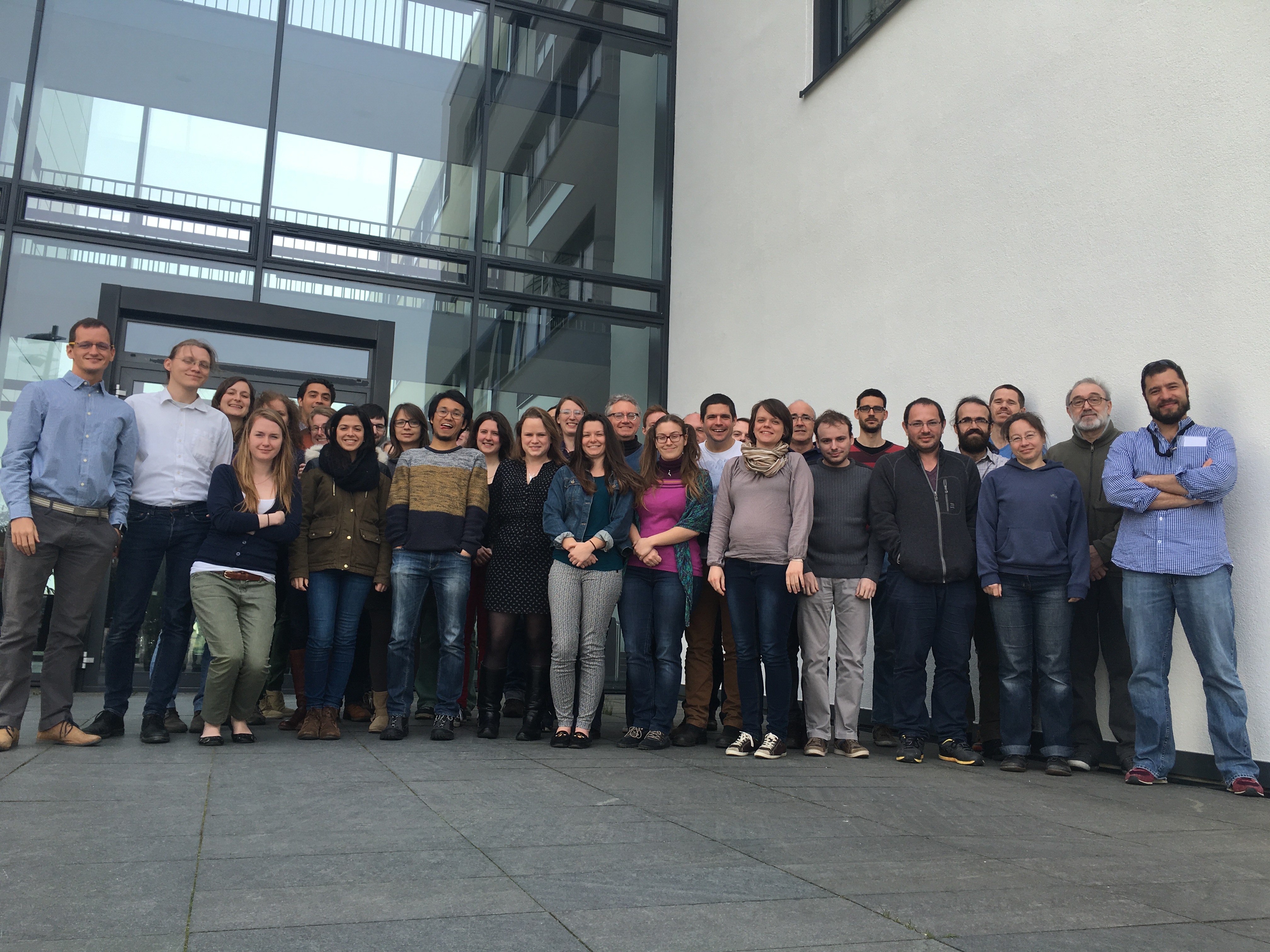COMPADRE & COMADRE in a world of big data and comparative science
by Rob Salguero-Gomez on May 12, 2016A blog post by Maria Paniw
Take a look at recent publications in peer-reviewed journals or popular science magazines and you cannot miss the two big trends: big data and comparative analyses. Recent reviews suggest that future groundbreaking, socially relevant science will be achieved through large collaborative efforts bringing together multiple datasets for a global comparison of ecological phenomena. Recently (April 2016), a group of researchers working on various topics related to life-history strategies got a taste of how open-access outputs of such collaborative efforts can be used for comparative analyses. And using the COMPADRE and COMADRE databases, together with other (see below) open-access data repositories was a big part of the experience. Young academics from around the world met in the Max Planck Institute for Demographic Research (MPIDR) in Rostock, Germany for a week-long workshop titled “Comparative Approaches in Ecology and Evolution” as part of the programme of International Advanced Studies in Demography. The course was a unique opportunity to learn how to extract information from various open-access databases. The teaching was done, via lectures and, importantly, lots of R code (!), by an impressive number of instructors – all experts in functional ecology, demography and/or phylogenetic analyses. All work had one goal: examining global drivers of life history strategies using robust statistical tools on large datasets. In the process, participants were introduced, among many others, to CLOPLA, a database on clonal traits in plants, or DATLife, providing mortality and fertility data for numerous species. [caption id="attachment_195" align="alignnone" width="4032"] Participants and instructors of the workshop “Comparative Approaches in Ecology and Evolution” organized by Rob Salguero-Gómez at the MPIDR in Rostock, Germany. Instructors included: Dr Scott Chamberlain (UC Berkeley, USA), Dr Kevin Healy (Trinity College Dublin, Ireland), Dr Owen Jones (Southern Denmark University, Denmark), Jean-François Lemaitre (CNRS, Lyon), Prof Bruce Kendall (UC Santa Barabara, USA), Prof Jitka Klimešová (Institute of Botany, Academy of Sciences of the Czech Republic), Prof Dmitrii Logofet (Russian Academy of Sciences, Moscow, Russia), Dr Alejandro Ordoñez (Aarhus University, Denmark), Dr Rob Salguero-Gomez (University of Sheffield, UK), Dr Alexander Scheuerlein (Max Planck Institute for Demographic Research), Dr Iain Stott (Max Planck Institute for Demographic Research, Germany) and Prof Jean-Michel Gaillard (CNRS, Lyon, France).[/caption]
The COMPADRE Plant Matrix Database, along with COMADRE Animal Matrix Database, played a central role throughout the workshop. Of course, the fact that the core team of both databases organized the event played a part in this. At the same time, it was evident that the hard work put forth to make COM(P)ADRE easily accessible to researchers – including the ease to download the data and the detailed manuals - paid off. Working in groups, participants were encouraged to develop projects related to life-history analysis using open-access data – and several groups decided to work with COMPADRE/COMADRE. These projects included investigating environmental drivers behind demographic variability, correlating matrix projections of extinction probability with the IUCN Red List, or tracing phylogenetic signals in life-history traits. Preliminary outputs of these projects were promising – stay tuned to read about papers that will surely come out of these projects.
[caption id="attachment_194" align="alignnone" width="8052"]
Participants and instructors of the workshop “Comparative Approaches in Ecology and Evolution” organized by Rob Salguero-Gómez at the MPIDR in Rostock, Germany. Instructors included: Dr Scott Chamberlain (UC Berkeley, USA), Dr Kevin Healy (Trinity College Dublin, Ireland), Dr Owen Jones (Southern Denmark University, Denmark), Jean-François Lemaitre (CNRS, Lyon), Prof Bruce Kendall (UC Santa Barabara, USA), Prof Jitka Klimešová (Institute of Botany, Academy of Sciences of the Czech Republic), Prof Dmitrii Logofet (Russian Academy of Sciences, Moscow, Russia), Dr Alejandro Ordoñez (Aarhus University, Denmark), Dr Rob Salguero-Gomez (University of Sheffield, UK), Dr Alexander Scheuerlein (Max Planck Institute for Demographic Research), Dr Iain Stott (Max Planck Institute for Demographic Research, Germany) and Prof Jean-Michel Gaillard (CNRS, Lyon, France).[/caption]
The COMPADRE Plant Matrix Database, along with COMADRE Animal Matrix Database, played a central role throughout the workshop. Of course, the fact that the core team of both databases organized the event played a part in this. At the same time, it was evident that the hard work put forth to make COM(P)ADRE easily accessible to researchers – including the ease to download the data and the detailed manuals - paid off. Working in groups, participants were encouraged to develop projects related to life-history analysis using open-access data – and several groups decided to work with COMPADRE/COMADRE. These projects included investigating environmental drivers behind demographic variability, correlating matrix projections of extinction probability with the IUCN Red List, or tracing phylogenetic signals in life-history traits. Preliminary outputs of these projects were promising – stay tuned to read about papers that will surely come out of these projects.
[caption id="attachment_194" align="alignnone" width="8052"] The 24 participants (from a total of 20 countries!) and instructors working together on their group projects examining various aspects of life history variation among plants and animals worldwide.[/caption]
To sum up, the workshop was a great success, despite the "spring weather" in Rostock, and will hopefully be repeated in the future.
Maria Paniw
PhD candidate at the Universidad de Cádiz, Spain
The 24 participants (from a total of 20 countries!) and instructors working together on their group projects examining various aspects of life history variation among plants and animals worldwide.[/caption]
To sum up, the workshop was a great success, despite the "spring weather" in Rostock, and will hopefully be repeated in the future.
Maria Paniw
PhD candidate at the Universidad de Cádiz, Spain


